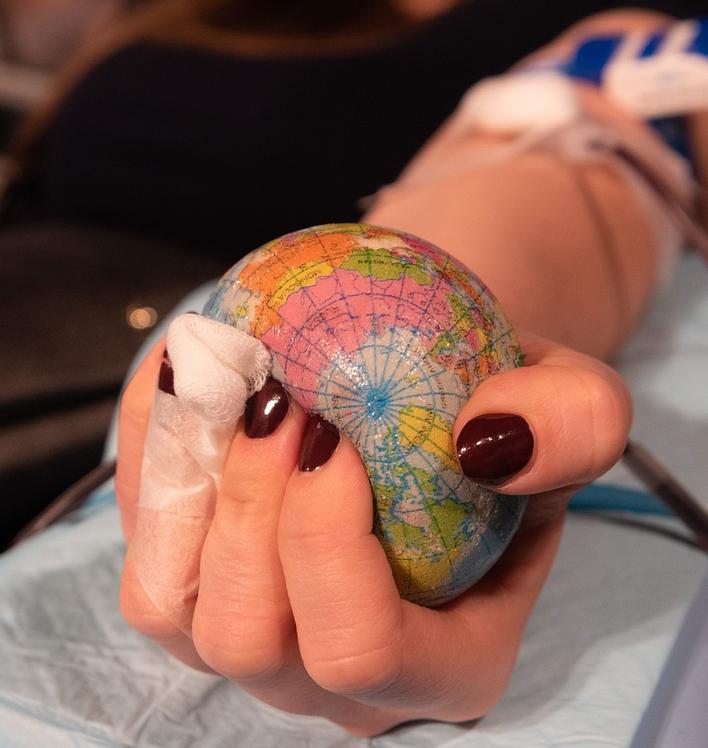
OPTIMAL TREATMENT USING PRP AUTOLOGOUS BLOOD THERAPY
The PRP autologous blood therapy (platelet-rich plasma) uses the body’s own growth factors to specifically promote tissue healing. It is particularly effective for cartilage damage, after operations, or for injuries such as ACL tear, meniscus tear or shoulder dislocation, it can support regeneration and inhibit inflammatory processes.
- 1. What is PRP?
- 2. How is PRP obtained?
- 3. What is the PRP treatment procedure?
- 4. How does PRP work in the body?
- 5. When is PRP used at RESTART-Ortho?
- 6. What are the advantages of PRP therapy?
- 7. Frequently asked questions about PRP therapy
- 8. Conclusion and role of autologous blood therapy (PRP) in the aftercare of sports injuries
1. What is PRP?
PRP stands for “”Platelet Rich Plasma or platelet-rich plasma. It is a concentrated form of the patient’s own blood, which contains a high number of platelets (thrombocytes). These thrombocytes are rich in growth factors, which play a crucial role in tissue regeneration and wound healing. In addition, anti-inflammatory cytokines are present in the PRP, which can influence inflammatory events. PRP is therefore an autologous, biologically active preparation that specifically stimulates the body’s own regeneration – for example, in the case of autologous blood therapy on the knee or shoulder joint or on tendon changes.


2. How is PRP obtained?
The first step is to take about 12 milliliters of venous blood from the patient’s arm vein. Then the blood is processed in a state-of-the-art centrifuge to separate the components. The aim is to isolate a concentrate of the platelets, which is processed in a sterile procedure. The end product is PRP – a yellowish clear plasma with a high platelet concentration. Depending on the centrifuge system, a distinction is made between different PRP forms, such as leukocyte-rich or -poor PRP. Both variants have different focal points . This enables us to react differently to acute inflammation than to reagieren als bei chronischen Sehnenveränderungen wie z.B. Tennis- oder Golferellbogen oder Achillessehnenbeschwerden.
3. What is the PRP treatment procedure?
The processed PRP is injected directly into the affected joint or tissue. This is done under sterile conditions and sometimes under ultrasound control. The therapy frequency depends on the clinical picture, but the injections are usually given at intervals of one to two weeks. The exact number and frequency depends on the severity of the symptoms and the course of healing. Usually three sessions are carried out, in individual cases up to five. Anti-inflammatory drugs such as ibuprofen should be avoided for several days before and after treatment, as these can negatively affect the effect of PRP.
4. How does PRP work in the body?
After injection, the platelets release growth factors such as PDGF, TGF-β and VEGF. These promote:
- Cell proliferation: The division and multiplication of cells, e.g. chondrocytes in cartilage defects.
- Collagen synthesis: Building collagen to stabilize the tissue.
- Anti-inflammation: Inhibition of pro-inflammatory molecules such as IL-1 or TNF-α.
- Microcirculation and angiogenesis: Promoting the formation of new blood vessels.
In addition, PRP has an antioxidant effect and can regulate the environment within damaged tissue. Studies show that PRP inhibits the expression of matrix metalloproteinases, thus slowing down the degradation of cartilage matrix. The production of hyaluronic acid is also stimulated, which has a positive effect on the viscosity of the joint fluid – an advantage in the treatment of irritation in both osteoarthritis and cartilage damage, as well as in the perioperative setting for meniscus tear treatment and ACL tear injury.
5. When is PRP Used at RESTART-Ortho?
PRP therapy has proven effective for numerous musculoskeletal complaints. These include all three key areas treated at RESTART-Ortho: knee, shoulder and myofascial musculoskeletal system (muscles, tendons, fascia)
- Knee osteoarthritis (stage I–III): Pain reduction, improved mobility, functional stabilization.
- Frozen Shoulder
- Tendon changes/tendinopathies: e.g. Achilles tendon, patellar tendon, tennis elbow, golfer’s elbow
- Muscle fiber tears: Promoting faster regeneration.
- Ligament strains/partial tears: e.g. on the ankle or medial collateral ligament of the knee.
- Rotator cuff irritation or partial tears.
PRP is also increasingly used in postoperative healing processes – for example after meniscus surgery, ACL tear surgery or shoulder dislocation surgery – to accelerate healing.
6. What are the advantages of PRP therapy?
Autologous blood therapy offers numerous advantages that make it a modern and well-tolerated treatment method – especially for cartilage damage and joint problems. Since only the body’s own components are used, the therapy is particularly biocompatible and almost free of allergic reactions. Unlike cortisone injections, PRP does not focus on purely combating symptoms, but on specifically promoting tissue regeneration. The known risk of tendon ruptures from cortisone injections is also avoided.
The application is minimally invasive, outpatient, without general anesthesia and with little risk. Side effects are extremely rare. Thanks to its versatility, PRP is suitable for both degenerative damage and traumatic injuries. The use of the anti-inflammatory and regenerative properties of PRP are useful in the conservative (without surgery) and surgical treatment of cartilage damage, ACL tear or meniscus tear, but also for pain in the area of the tendons of the rotator cuff on the shoulder as part of a treatment concept.
7. Frequently asked questions about PRP therapy
How quickly does it take effect?
The effect of PRP autologous blood therapy depends heavily on the type and severity of the underlying injury or disease. Many patients experience initial noticeable improvement—such as reduced pain or increased mobility—within two to three weeks. This applies to both degenerative changes, such as early-stage knee osteoarthritis, and acute sports injuries, such as a torn cruciate ligament or meniscus.
How many sessions are necessary?
The number of injections required depends on the individual diagnosis, the stage of the disease, and the tissue’s response to the initial treatment. Three to five injections are usually recommended, administered at intervals of one to two weeks. In the case of acute injuries such as patellar dislocation or a fresh meniscus tear without surgery, three sessions may be sufficient to significantly promote the healing process. For chronic conditions—such as long-standing knee osteoarthritis or persistent patellar tendonitis—a series of five or more treatments may be advisable. In certain cases, especially for competitive athletes, PRP is also used as a preventive measure at longer intervals to prevent damage from overexertion. Close medical supervision throughout the entire treatment period ensures that the number of injections is optimally adjusted to each individual.
Are there any contraindications?
As with any medical therapy, there are clear exclusion criteria for PRP autologous blood therapy to ensure patient safety. The most important contraindications include acute infections—both systemic and in the area to be treated—blood clotting disorders, active tumor diseases, pregnancy, and breastfeeding. In addition, treatment should be individually assessed in patients with severe systemic diseases or autoimmune diseases. The use of certain medications, especially blood thinners or high-dose anti-inflammatory drugs, can also influence the effectiveness of PRP and must be discussed with the doctor in advance. For example, anyone who has recently undergone surgery such as cruciate ligament repair or shoulder dislocation surgery should also have an individual assessment to determine whether the optimal time for PRP treatment has already been reached.
Does health insurance cover the costs?
In Germany, autologous blood therapy is not yet included in the list of services covered by statutory health insurance. This means that the treatment is usually billed as a self-pay service. Private health insurance companies cover some or all of the costs, especially if the therapy is medically justified and prescribed by a doctor. Some insurers require a detailed treatment plan and a medical indication before they approve coverage. Patients who bear the costs themselves should obtain a cost estimate before starting therapy to facilitate financial planning.
8. Conclusion and role of autologous blood therapy (PRP) in the aftercare of sports injuries
The PRP Autologous Blood Therapy represents a modern, scientifically very well-documented form of treatment in conservative orthopedics in its basic mode of action. The study situation is still inconsistent due to the broad definition of the term PRP. From our years of experience, we areconvinced of the advantages of autologous blood therapy for the appropriate indications and at the same time a minimization of the treatment risk (allergy, risk of infection, tendon ruptures) compared to drug treatments convinced. It can be a useful addition, especially in early stages of degenerative diseases or in sports injuries such as Kknee damage in the case of ACL tear, meniscus tear or muscle-, ligament and tendon injuries be.
